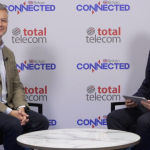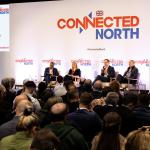Viewpoint
From robotic dogs capable of responding to emotion to sophisticated e-health solutions, this year’s Mobile World Congress seemed to belong to the Internet of Things (IoT). But, while these gadgets might catch the consumers’ eyes, what do they mean for the mobile network operatoers? Is this another trend which will see their profits eaten away or can they create new value propositions and business models to cash in on the next big thing?
According to GSMA Intelligence, cellular and Low-Power, Wide-Area (LPWA) IoT connections could represent 20 per cent of the global IoT industry by 2020. The opportunities this market poses are huge and judging by the sea of IoT gadgets being showcased at this year’s MWC, everyone is already vying for their share of profit, with a host of vendors launching various devices for controlling everyday objects via the internet. There is no doubt that the trend is one which is here to stay.
What isn’t completely clear yet is where the telcos fit into this picture. At the biggest telecoms event on the calendar it is certainly a question which should not be ignored – after all, the last thing operators need is another medium to clog up their pipes with no return on investment. Important as this issue is, had anyone thought to address it?
New Value Propositions
Fortunately for operators, the topic was one at the forefront of a number of company’s minds. In fact, for Huawei, it was one of the ICT solutions provider’s big initiatives for its 2016 show.
“IoT will be a very hot topic which attracts a lot of attention wherever you go around the world and how this impacts the telcos and how they can take advantage of this boom is a key priority for us,” said Dr San-qi Li, CTO of Products & Solutions at Huawei. “We predict that, by the year 2020, telcos will have ten billion IoT connections across consumers and industries, growing from five billion people. The question is, where are the business models? The creation of relevant new value propositions is the major challenge for the carrier to figure out.”
It is with this in mind that Huawei has put together its IoT strategy, which focuses on the IoT connectivity infrastructure and solution ecosystem empowerment. Specifically, one platform, two access modes and the client device IoT Operating System (OS) ecosystem – or, as Huawei puts it, one plus two plus one for IoT connectivity infrastructures.
“The IoT connectivity platform goes beyond former centralised data centres to provide IoT connectivity functionality, including event processing, aggregation, streaming and security which can happen virtually at every layer of the network, largely at the edge,” continued Li. “Such IoT connectivity needs substantial intelligence to improve user experiences, especially where a large amount of IoT data streaming analytics happens within the networks.”
According to Li, IoT has two basic access modes – long-range direct mobile access connection for IoT such as Narrowband (NB)-IoT for long range and low power connectivity and local short-range access IoT connectivity through various wireless connections which are typically at the edge and often outside of or extended from carrier networks. These access modes can be applied in both the consumer and industry spheres.
Li added: “Finally, Huawei’s LiteOS can be embedded in a wide range of IoT client devices to build ecosystems through open source and based on Linux software technologies, especially to cover the low power and low end client devices with diversified communication capabilities.”
So far so good but what does all this mean in terms of generating additional revenue for telcos?
“What this strategy does is provide the base for operators,” said Li. “In Barcelona this week we have officially launched three products along with their targeted IoT solutions. These are Smart ONT, NB-IoT and Agile Access Router (AR) industry IoT local-connectivity wireless-based solutions.”
Smarter Homes
The first of Huawei’s solutions is a Smart Home gateway which aims to address the current fragmentation of home appliances. It is designed to act as an anchor device for the home hub, enabling telco providers to empower the digital home services ecosystem.
“The device combines four major functions that used to be available through multiple isolated products,” continued Li. “Its technology is based on an open cloud-based embedded software platform in combination with advanced chip technologies. It uses a broadband optical home connection, along with various local wireless connections, and includes advanced security functions and built-in emerging IoT connectivity protocols.”
The platform also enables partners to create applications and use the device as a Smart Home control centre with local integration and management automation, something which Li highlighted as particularly important.
He added: “To ensure the Smart Home delivers on its promise of making consumers’ lives simpler and more connected, it is critical for telcos to form smart home solution alliances through openness and collaboration. That is why we have also launched the so-called OpenLife partner programme, which uses open API and SDK to facilitate the interplay among various Smart Home solution players.”
In particular, according to Li, the programme focuses on early product integration from different vendors, business development and collaboration for joint innovation, service automation and lifecycle management.
Intelligence in industry
Away from the home, in the business sphere, Huawei also believes it has a solution which will enable operators to find true success in the IoT market. It describes its Agile AR as a unified industry network-edge device which meets industry-grade hardened design requirements and supports an abundance of network interfaces and open, legacy, proprietary and emerging standards.
The solution has already being installed for a leading carrier in Africa, with close collaboration with the country’s dominant electric utility supplier there. Huawei implemented Agile AR which was then used across household, commercial and industrial customers of the electricity supplier. As a result, the previously low payment success rate reached nearly 100 per cent, the power lost reduced from 45 per cent to 14 per cent, reducing Operational Expenditure (OpEx), increasing revenue and creating better user experiences. The framework is also allowing the supplier to take advantage of new opportunities, for example, in data analytics and digital online operation.
Huawei’s initiative is just one example of how this space is being targeted at Mobile World Congress. In Hall 2, Italtel – a leading telecommunications company in next generation networks, services and IP communication – was showcasing how it has leveraged its experience in network design to launch two new IoT solutions. The first uses cloud computing to collect data from a variety of sensors and meters over several different
networks before converting the raw data into useful insights and information. These insights will then enable enterprises, utility companies and public sector administrators to enhance business efficiency and improve public safety and quality of life. Italtel’s second offering is DoctorLINK for the e-health market. This end-to-end solution enables continuity of care after a patient returns home from hospital and, based on WebRTC technology, uses contextual communication to provide real-time services to simplify the experience of outpatients and improve interaction between them and the hospital. The solution can also act as a therapy manager and scheduler, collecting healthcare data from IoT sensors to track a patient’s wellbeing in real-time.
Deeper coverage
Of course, with the variety of IoT uses and devices, there are other factors which become more important in connectivity than ever before. This is why Huawei’s third launch in the IoT domain was NB-IoT.
“NB-IoT has 100 times connectivity for cell coverage when compared to 4G today” said Li. “20dB deeper coverage means you are able to penetrate an additional wall, no matter whether it is your basement or something else within a building.”
To highlight how NB-IoT can prove worthwhile for operators, Li referred to Vodafone.
“We engaged with Vodafone to install IoT smart water-metering systems which allow the carrier to create new value propositions,” he said. “Assuming you can cover one million households, you have a monthly APRU of $1 per month. This is small, but the value chain can be based on the transactions. You move up the value chain based on the API, cutting the cost of end-to-end solutions and improved smart metering efficiency. That all comes along with it, and the billing as well. Therefore, you can see monthly that, from one million households, there are 72 million transactions. You can build new value proposition based on transactions, beyond the fixed ARPU, by moving up the value chain.”
Conclusion
Far from being forgotten, then, the teclo is in fact at the centre of IoT and in many ways holds the key to unlocking the wealth of opportunities the market promises. In order for the telco to truly triumph, the right business models and new value propositions are critical, as is a more intelligent network, built on the software, cloud and data centre principles.
Li concluded: “IoT is hot; it is emerging. In both the consumer and industry spaces, beware the potential value proposition of how we can create a new business for telcos to get into this space. Openness, collaboration and the shared economy is the future of the digital economy where IoT will be evolved.”
















